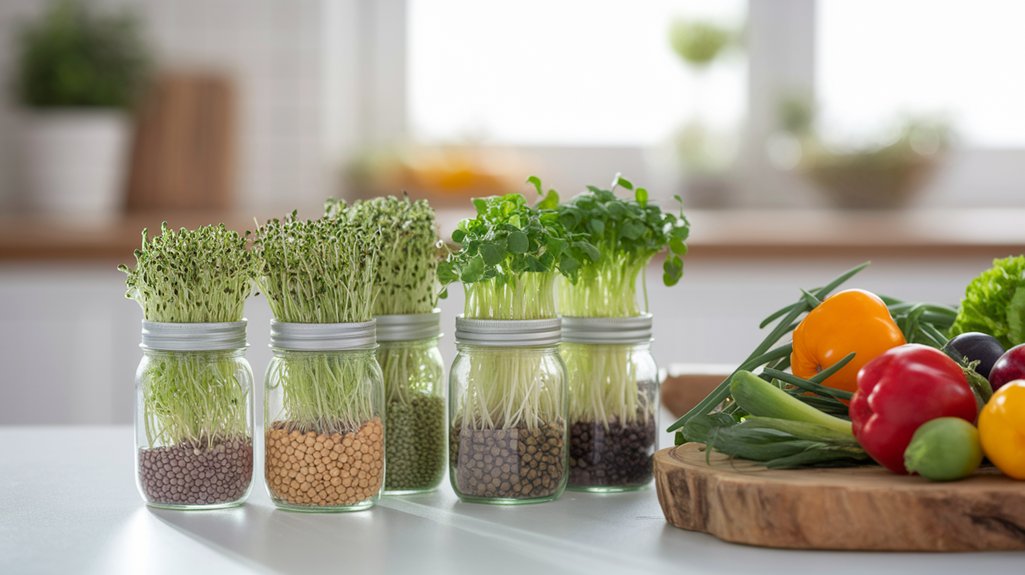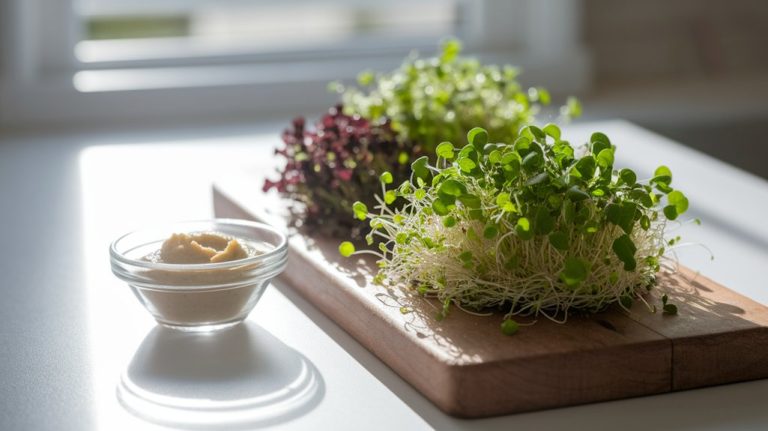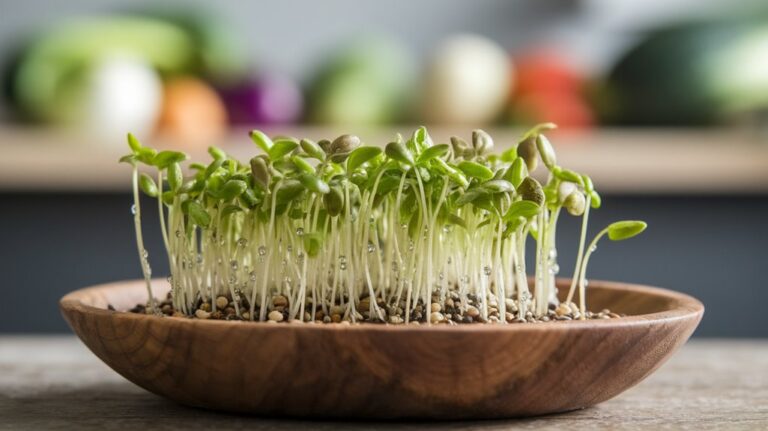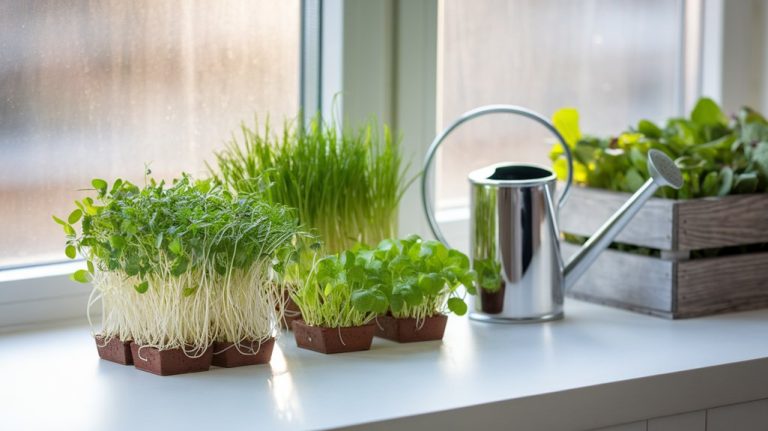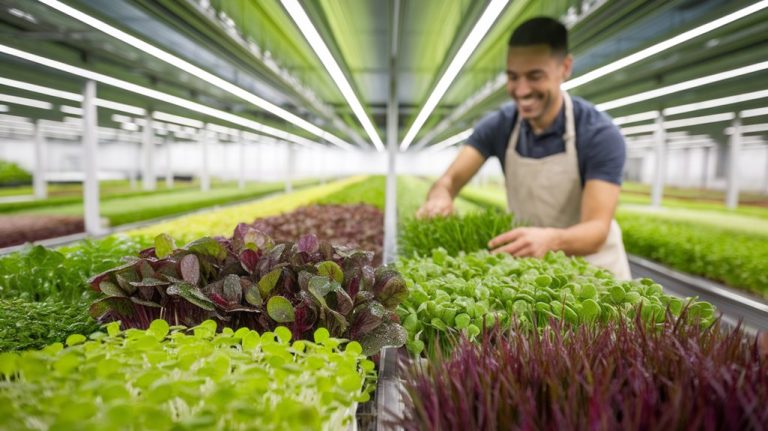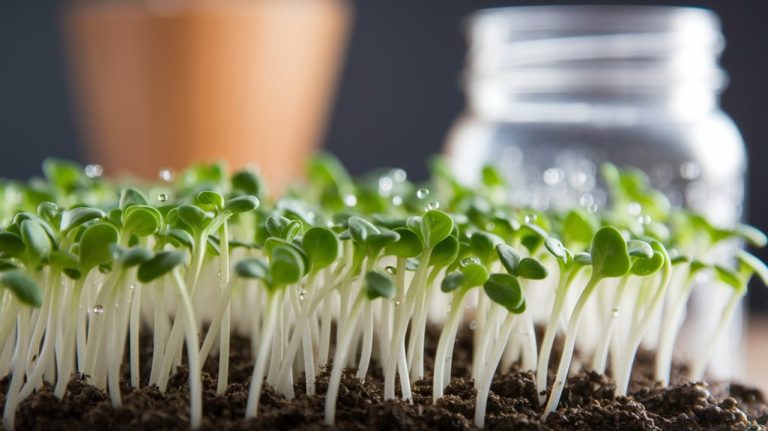Sustainable Eating: Why Sprouting Cuts Food Waste
Sprouting is a fantastic way to cut food waste while boosting nutrition in my meals. By transforming seeds into sprouted grains and legumes, I maximize their shelf life and turn imperfect produce into something nutritious. It’s sustainable too—requiring less water and energy than traditional farming practices. Plus, I can grow sprouts indoors, minimizing the need for pesticides. If you’re curious about how to start sprouting at home and incorporate it into your diet, there’s so much more to explore!
Key Takeaways
- Sprouting extends the shelf life of grains and legumes, maximizing their usability and reducing potential waste.
- Utilizing imperfect produce for sprouting transforms what would be waste into nutritious food.
- Sprouting allows consumers to grow only what they need, minimizing over-planting and waste.
- By breathing new life into seeds, sprouting contributes to a sustainable approach to food consumption.
- The minimal water and energy requirements for sprouting lessen the carbon footprint associated with traditional farming practices.
The Benefits of Sprouting for Nutritional Value
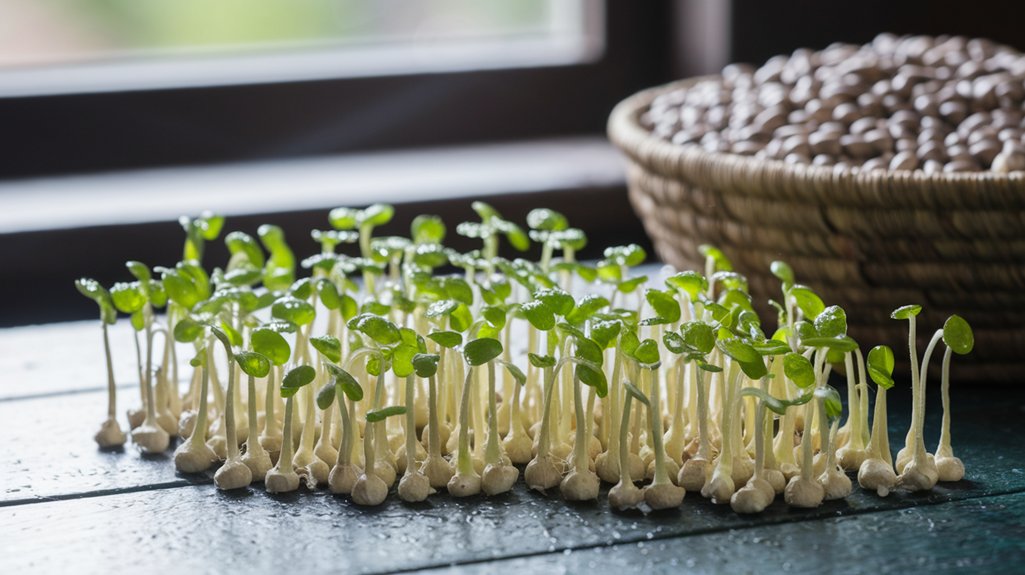
When I first discovered the benefits of sprouting, I was amazed to learn that these tiny seeds pack a nutritional punch that can transform my meals.
Sprouting activates enzymes, making nutrients more bioavailable, which means my body absorbs vitamins and minerals more efficiently. I found that sprouted grains and legumes are rich in protein, fiber, and antioxidants, boosting my overall health.
Plus, they’re low in calories, so I can indulge guilt-free. Incorporating sprouted foods into my diet hasn’t only enhanced the flavor of my dishes but also added a satisfying crunch.
Whether I toss sprouted seeds in salads or blend them into smoothies, I feel empowered knowing I’m nourishing my body with vibrant, living foods.
Why not give it a try?
How Sprouting Helps Reduce Food Waste
Many people don’t realize that sprouting can be a powerful tool in the fight against food waste. By transforming seeds into sprouts, we can breathe new life into ingredients that might otherwise be discarded.
Here are three ways sprouting helps reduce food waste:
- Maximizes Shelf Life: Sprouting can extend the usability of grains and legumes, allowing you to enjoy them longer before they spoil.
- Utilizes Imperfect Produce: You can sprout seeds from slightly stale or blemished items, turning them into nutritious food rather than throwing them away.
- Reduces Over-Planting: By sprouting at home, you’ll use only what you need, minimizing excess that often ends up in the trash.
Embracing sprouting not only benefits our plates but also helps our planet!
Easy Steps to Start Sprouting at Home
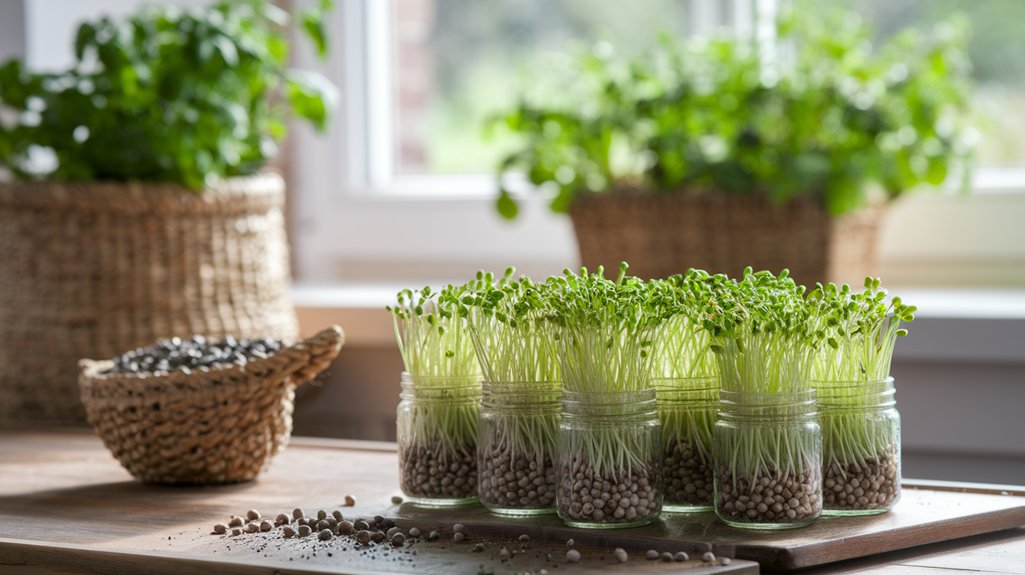
Starting your sprouting journey at home is easier than you might think, especially if you’re ready to transform your kitchen into a source of fresh, nutritious greens. Here’s a simple guide to get you started:
| Step | What You Need | Time Required |
|---|---|---|
| Choose Seeds | Sprouting seeds (e.g., alfalfa, lentils) | 5 minutes |
| Rinse & Soak | A jar and water | 8-12 hours |
| Drain & Rinse | A fine mesh lid or cheesecloth | 3-5 days (daily rinsing) |
With just a few supplies and a little patience, you’ll enjoy the benefits of home-grown sprouts. It’s a fun and sustainable way to enhance your meals, and I can’t wait for you to taste the difference!
Incorporating Sprouts Into Your Diet
Having sprouted your seeds and witnessed their transformation into vibrant greens, it’s time to explore how to incorporate these nutritious powerhouses into your daily meals.
Sprouts aren’t only versatile but also add a delightful crunch and flavor to various dishes. Here are three easy ways I love to enjoy them:
- Salads: Toss a handful of sprouts into your favorite salad for extra texture and nutrition.
- Sandwiches: Layer sprouts into your sandwiches or wraps for a fresh twist that elevates the whole meal.
- Smoothies: Blend sprouts into your smoothies for a nutrient boost without altering the taste.
The Environmental Impact of Sprouting Practices
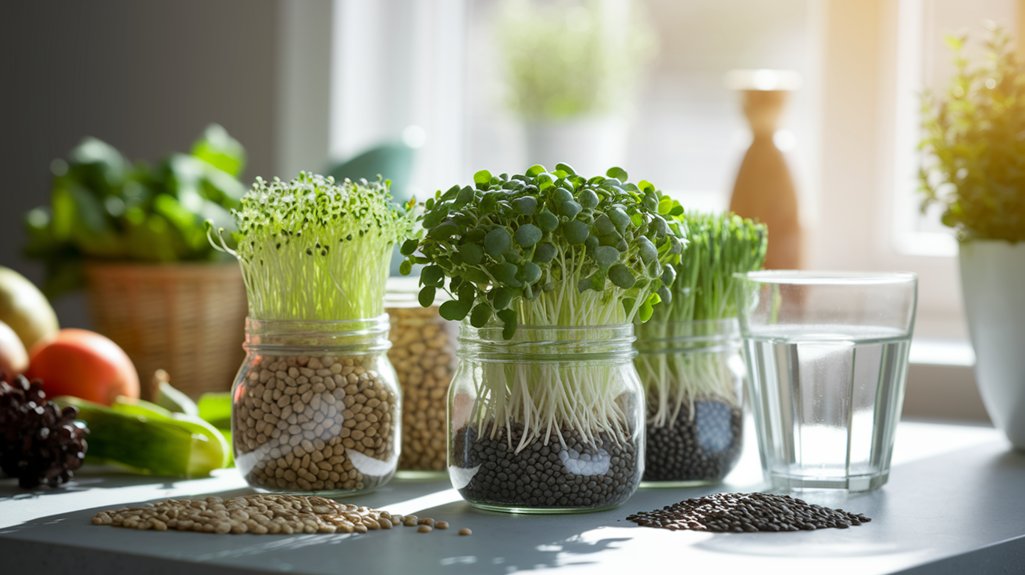
While I appreciate the numerous health benefits of sprouts, it’s essential to consider their environmental impact as well.
Sprouting is a low-resource process that requires minimal water and energy compared to traditional farming. By choosing to sprout, I’m reducing the carbon footprint associated with transporting and storing mature crops.
Moreover, sprouting can take place indoors, eliminating the need for pesticides and fertilizers that often harm local ecosystems. This practice not only minimizes waste but also promotes biodiversity, as I can grow a variety of seeds that may not be widely available.
By incorporating sprouted foods into my diet, I actively support sustainable food systems and help foster a healthier planet for future generations.
Let’s make conscious choices together!
Frequently Asked Questions
Can Sprouting Be Done With Any Type of Seed or Grain?
Absolutely, you can sprout a variety of seeds and grains! I’ve had success with alfalfa, mung beans, and even quinoa.
Each type brings its own unique flavor and texture to dishes. Just make sure to choose seeds that are specifically labeled for sprouting, as some might be treated with chemicals that aren’t safe to eat.
How Long Does It Take for Seeds to Sprout?
When I sprout seeds, I usually find it takes anywhere from 2 to 7 days, depending on the type of seed.
For example, alfalfa sprouts can be ready in just 3 days, while larger beans might take a bit longer.
It’s fascinating to watch them transform!
Just remember to keep them moist and in a warm spot.
You’ll be amazed at how quickly they grow, making it a rewarding and simple process.
Are There Any Risks Associated With Eating Sprouts?
I understand your concern about risks associated with eating sprouts.
While they’re nutritious, they can sometimes harbor bacteria like E. coli or Salmonella. I always rinse my sprouts thoroughly and buy from reputable sources.
If I’m sprouting at home, I ensure to keep everything clean and monitor their growth closely.
It’s essential to enjoy sprouts safely, but with proper precautions, I believe they can be a delicious and healthful addition to my meals.
What Equipment Is Necessary for Home Sprouting?
When I started home sprouting, I quickly realized I didn’t need much equipment. A simple glass jar with a mesh lid works perfectly, allowing air circulation while keeping moisture in.
I also use a bowl to soak the seeds for a few hours. A small spray bottle helps me mist them daily.
That’s it! With these few items, I’ve been able to grow fresh, nutritious sprouts right in my kitchen. It’s that easy!
Can Sprouting Be Done Indoors Year-Round?
Absolutely, sprouting can be done indoors year-round!
I love how easy it’s to incorporate fresh sprouts into my meals, no matter the season. You just need a suitable container, some seeds, and a little water.
I’ve found that keeping them in a warm, well-lit area helps them thrive. It’s rewarding to watch them grow, and it adds a nutritious punch to my dishes.
Give it a try; you won’t regret it!
Conclusion
Incorporating sprouting into your life isn’t just a nutritious choice; it’s a powerful way to combat food waste. By simply sprouting beans, seeds, or grains, you’re maximizing their potential and minimizing what goes to waste. Plus, it’s easy and fun to do right at home! So why not give it a try? You’ll be amazed at how delicious and versatile sprouts can be in your meals while making a positive impact on the environment.

